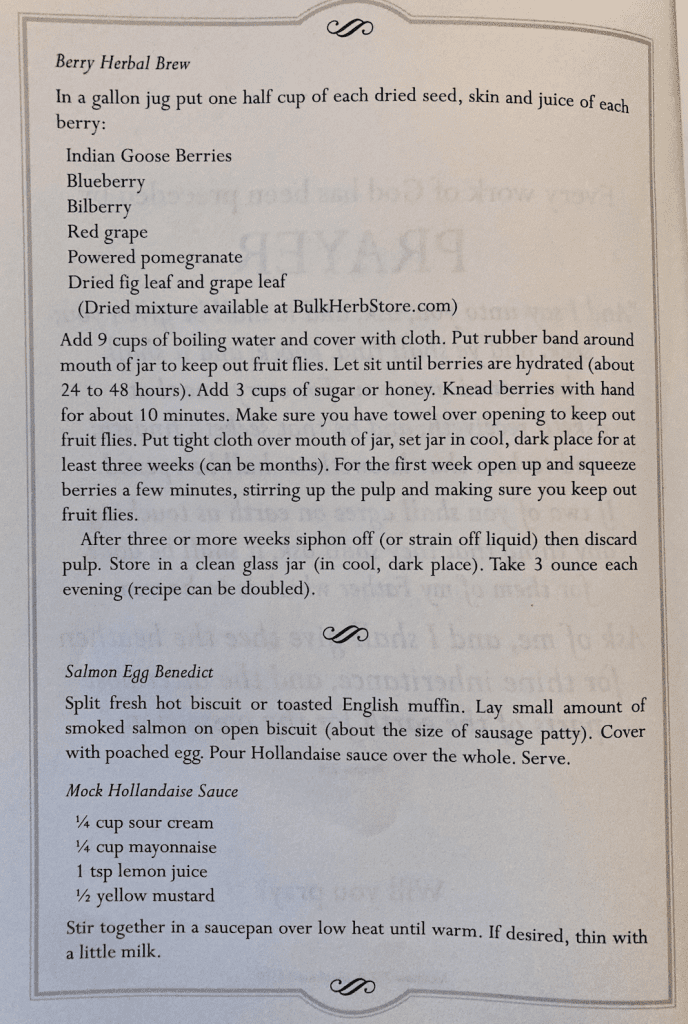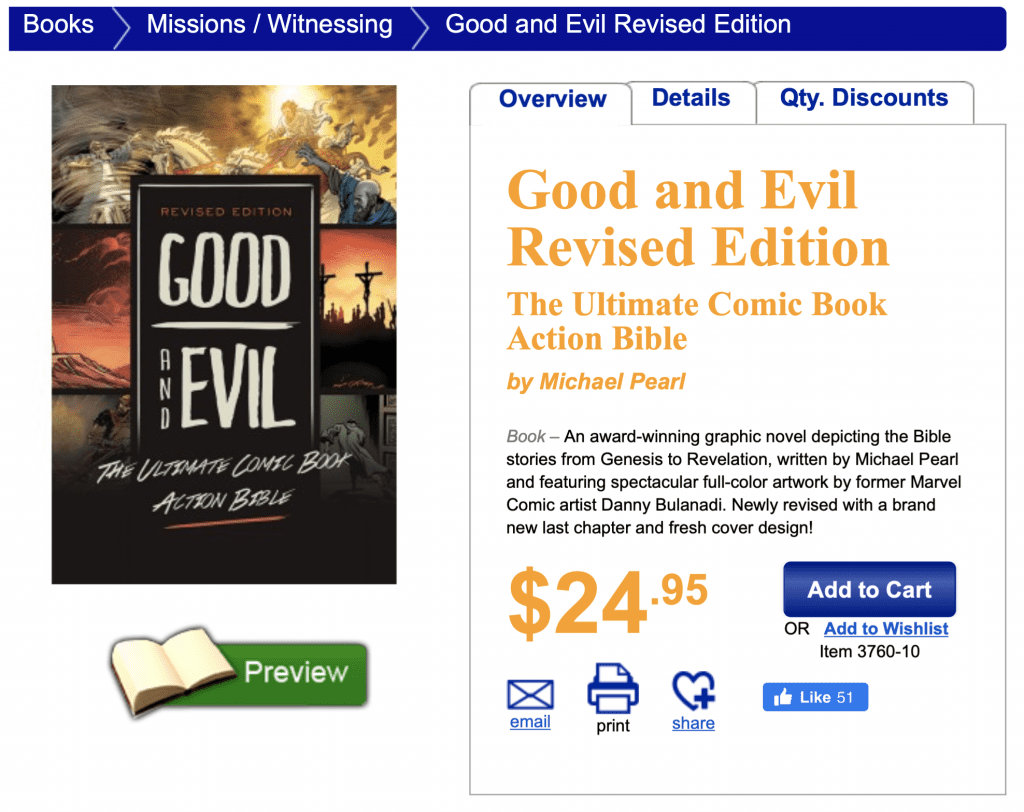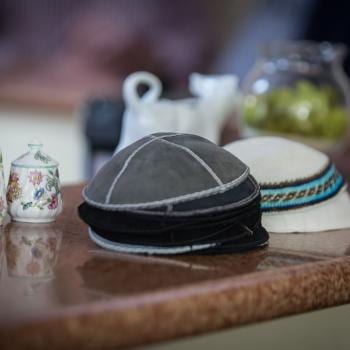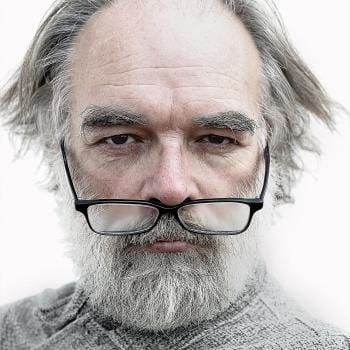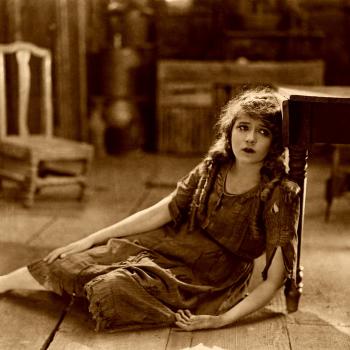The Vision, pp. 325-335
There are only two things left in the book.
Rashid and Fadiyah
First, there’s an epilogue. It is only a couple pages long and is about characters we’ve never heard of before: a married couple named Rashid and Fadiyah, who are driving around small villages in Sudan dropping off boxes of Arabic graphic novel Bibles.
As they’re driving to the spot to drop their last load, they end up in a firefight, and have to abandon their motorbike. They’re running for their lives in the dark when they come upon a building with a tree growing right up next to and over it. Rashid hoists Fadiyah up to the branches and tells her to climb onto the roof and hide under the tree branches on the roof for three days. She’s pregnant, and he tells her that she and the baby must survive, and that he’ll draw off their pursuers.
He then runs off, probably to never see her again. But they’re both totally happy, because they read the graphic novel Bible on the internet and converted and this is a cause they’re willing to die for.
As he raced away, the young warrior of God whispered into the night, “God make me swift. Make me strong. Cause me, Lord, to suffer in silence so that my dear Fadiyah will not hear my cries. Thank you, Lord, that those of this village will soon know you.”
This just feels profoundly sad.
Wait a minute. I’m reminded of something. Voluntary martyrdom. There was a point in early church history when Christians were outing themselves to the authorities wanting to be executed. Because then they’d be martyrs. This freaked the authorities out, because why would people do that?? It also caused the church authorities to issue a proclamation against voluntary martyrdom.
The way Magdalene’s death was discussed—and the way this epilogue discusses Rashid and Fadiyah—remind me of this concept. Voluntary martyrdom. It’s a sort of glorying in death for a religious cause, because life after death is better, and it’s deeply, deeply disturbing.
The Berry Brew
Next, there’s a recipe for the berry brew.
Why, I do not know.
Please, someone, make this brew! I find myself deeply curious. Mostly about look. And consistency. And taste. But also, is Debi suggesting this is a real thing? Has she developed a brew that she thinks is actually life-saving? I just checked Debi’s daughter Shoshonna’s Bulk Herb Store, and I don’t see anything called “herbal berry brew,” though, so maybe not.
The Central Premise: Wish Fulfillment
Like Malachi Freeman in the book, Debi’s husband Michael Pearl has in fact written and published a graphic novel Bible. The Last Publishers ministry is clearly based on No Greater Joy ministries.
The Pearls’ vision is to translate this volume into 100 languages. You can see their press release calling for donations for translation work here here. In this they’ve had some success—they’ve been able to have the book translated into over 60 languages since 2000s.
Michael Pearl is not shy about his goals:
We can have this 312 page book printed in black and white overseas for between $2-3 per book. Think of it – a faithful missionary for less than three dollars! Good and Evil is a bold missionary. It can squeeze its way into closed countries where missionaries are not allowed. Its fantastic art, done in the popular style of Marvel Comics, makes it popular where other gospel literature would be rejected or destroyed. You can walk up to a Muslim or Buddhist street vendor and give him a box of these books and he will sell them, not caring that they advocate Christianity. After all, profit first. These little missionary books will keep telling the message over and over again as they lie around waiting for someone else to pick them up. In many cases a single copy will be read by as many as 100 people. That would be about three cents per person to communicate the message of Christ. It is our mission to send these little paper missionaries forth into every little nook and cranny on the globe, that every man, woman, and child may hear the good news of Jesus Christ.
There are whole sections of The Vision that seem to have been lifted directly from the Pearls’ marketing surrounding their Good and Evil books. That’s what The Vision is about: 0ur author, Debi, wants to believe that the graphic novel Bible her husband in fact wrote could create this level of change.
But it actually looks like this:
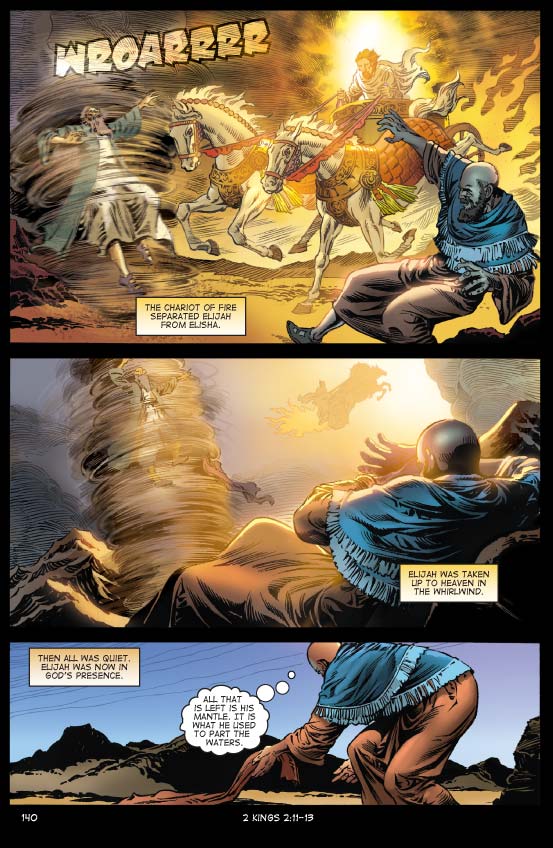
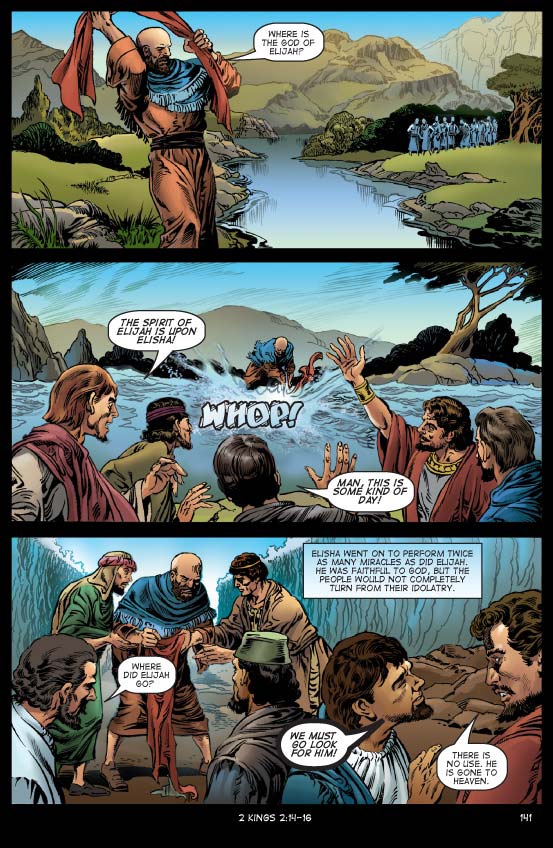
Look, I grew up reading a set of books almost exactly like this that I found in my church library. I really enjoyed them. I especially liked the section about Naaman, because the little serving girl character was well drawn, and made me feel like I could have been part of a story like this.
In other words, illustrated retellings of the Bible already exist. Michael Pearl did not invent something that was never done before. He did not find a magic formula to converting the world.
But on his website, Michael Pearl is insistent:
Some people told us that we were reinventing the wheel. There are many illustrated Bible story books on the market, some in the major Asian languages. Yes, we contacted them. Their pricing was prohibitive, the number of languages limited. The contents were sometimes childish, and the art just plain boring. We wanted to be able to give a missionary the rights to publish by the millions and to translate into any language. So, “If you want it done right…”
I don’t buy it. If this were all it took, Chick Tracts would have converted the world by now. Sure, they’re hokey—but frankly, so is Good and Evil.
The fundamental problem is that Michael wants a shortcut. Something easier than the shoe leather approach missionaries have conventionally taken. Michael is impatient. He wants a magic formula. Is that really any surprise? That’s the same thing his child training book offers: a magic formula.
Religious conversion simply doesn’t happen this way. Winning converts takes relationships, the exact thing Debi derides as inefficient and ineffective when describing the work of the conventional missionaries who came to the TLP compound to hear about this new project. “Training” children does not work that way either. It, too, requires relationships. There isn’t a shortcut.
Conclusion
And with that, we end our tour of Debi’s one and only novel. While I don’t know the reason, she never wrote her intended sequel. We don’t get to see what happens with Levi’s caves, or whether Yellowstone explodes and what damage it causes. We don’t get to see whether Asher finally asks Cheyenne to marry him, or whether Bobbie Jo’s breasts are able to convert Levi to Christianity.
Ah. But perhaps that’s what this series needs to cap it off. Some fan fiction. I’d love to read your take in the comments! Where do Yancey and Julie go? Did the factories in China get destroyed?
I must know!
I have a Patreon! Please support my writing!

